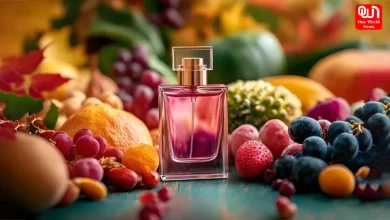BREWS AND INFUSIONS: TEA CULTURE

BREWS AND INFUSIONS: TEA CULTURE
A cup of freshly brewed tea, infused with flavor and aroma invigorates our body and mind every morning. Tea is like a boon to us as it not only rejuvenates the senses but also has a number of health benefits. Tea culture has developed over a period of time and has spread across the continents. It is inclusive of everything that goes into the preparation of tea, the way it is consumed by people all around the world, and the aesthetics that accompany the consumption of tea.

Considered as the second largest beverage consumed world-wide after water, there is a huge history behind the origination of tea. Originating from China, tea was earlier considered a medical drink. It began to be consumed during the Shang Dynasty. According to a popular Chinese legend, tea was discovered accidentally when Emperor Shen Nong was purifying water amidst a shelter of tea trees and a few leaves blown away by the wind landed in the pot of water. The revitalizing aroma that rose from the water enraptured the emperor and since then tea became a common drink amongst the Chinese.

Another popular Indian legend documenting the history of tea tells the story of Prince Dharma, who set upon a mission to preach the ideals of Buddhism in China. Three years later on his voyage, thoroughly fatigued he tore off the leaves from a nearby shrub and ate them which infused strength and vigor in him and hence he professed the benefits of tea.

From China, many Portuguese priests and merchants brought tea to the west increasing its popularity amongst the western countries. The British, in the attempts of breaking China’s monopoly over tea introduced it to India, however, they weren’t aware that India itself had a variety of tea plants grown in the northern regions of Assam and were consumed by the tribal natives of that part. Initially, popular amongst the anglicized Indians, tea gained widespread popularity in the 1950s due to the heavy campaigning done by the Indian Tea Board.

VARIETIES: The varieties of tea are combined under two broad categories that are used. One is the Camellia Sinensis that is used in Chinese and Japanese renditions. The other is Assamia which is used in Indian teas. Within this spectrum there are a host of strains and other modern varieties of tea that are used widely.
CLASSIFICATION: The main mode of classification is based on the size of the leaf. There are three main forms of tea based on leaf size: ASSAM TYPE which has the largest leaf; CHINA TYPE which has the smallest leaf and; CAMBODIAN TYPE which has the intermediate size.
From the mature plan only the topmost layers are picked. The buds and leaves that are picked are called Flushes. After processing these leaves, 6 varieties of teas are narrowed down which are: White, Yellow, Green, Oolong, Black, and Post Fermented.

PREPARATION: Preparation of the different varieties of tea differs on the basis of cultural preferences. The traditional method of preparation is to place loose tea leaves in a tea infuser, a tea pot or a tea cup and allow the water to brew for about two to three minutes and then strain.
Interestingly, in ancient times Chinese used to divide tea into a number of infusions believing that the first infusion needs to be drained out as it takes away the impurities and consequently the subsequent infusions are consumed. It is said that the third through fifth infusion is supposed to be the best.

A unique practice of tasting tea throughout the entire process of infusion is called “The Agony of the Leaves” where hot water is added to a cup of leaves and sampling the taste every second as the taste evolves.
Here is a brief description of how the various types of tea are prepared, so the next time you bring a pack of tea you can optimize its taste and flavor.
• BLACK TEA: Brewed for about 4 minutes, the leaves cannot be steeped for less than 30 seconds and for more than 5 minutes. However, the Indian rendition of black tea is boiled for 15 minutes to prepare the zingy Masala Chai.
• GREEN TEA: This is a milder version amongst the tea leaves which are steeped in water with low temperature. It is believed that higher the quality of leaves, lower the temperature is needed for infusion. In fact higher quality of leaves can be infused up to 4-5 times in fresh water.
• BLOOMING TEA: This is referred to flowering tea which when brewed for around 3 minutes helps the tea ball bloom faster resulting in the tea and flowers to bloom completely. This type of tea also can be brewed 4-5 times.
• OOLONG TEA: Clay Teapots are mostly used in the preparation of this tea, which should be warmed before pouring in the water. Fresh spring water should be used as the minerals of spring water bring out the flavor of the tea. This type of tea also can be brewed multiple times; in fact it is believed to improve with repeated infusions.
• PREMIUM TEAS: These types of teas are more delicate in nature and need to be steeped for shorter periods, usually for less than 30 seconds.

ADDITIONS AND RENDITIONS
Though originally consumed just by infusing tea leaves with water, tea began to evolve as a beverage. Adding flavors to the tea like jasmine, peppermint, cinnamon etc became commonplace. Sweetening tea with sugar or honey was considered to be a feminine practice, but soon caught on. Addition of milk started in Europe in the 1680s, usually in black teas to dilute tannin and reduce acidity.
In the colder areas of Mongolia, Tibet and Nepal, butter was added in the tea and in some other areas spirits like whiskey and brandy was also added. Another interesting practice to enhance the flavor of tea is to pour it from different heights.

Tea Culture is gaining popularity, with many tea places opening up all around the city. Enjoying an aromatic cup of tea infused with flavor along with an assortment of breads, tea cakes and scones makes drinking tea a hearty experience.
Whether you enjoying drinking tea in the Victorian style or having masala chai in the confines of your homes and offices, tea has continued to be a favorite beverage across the world!







